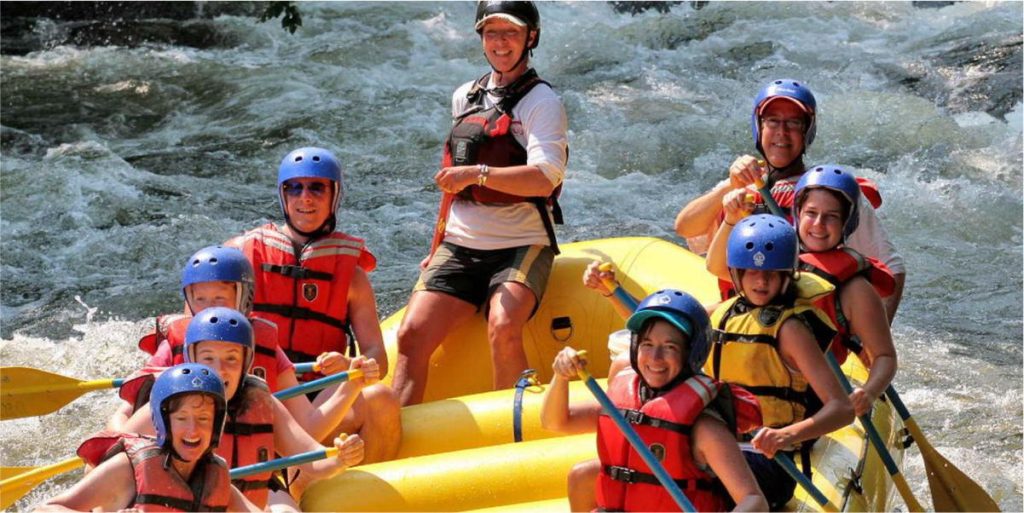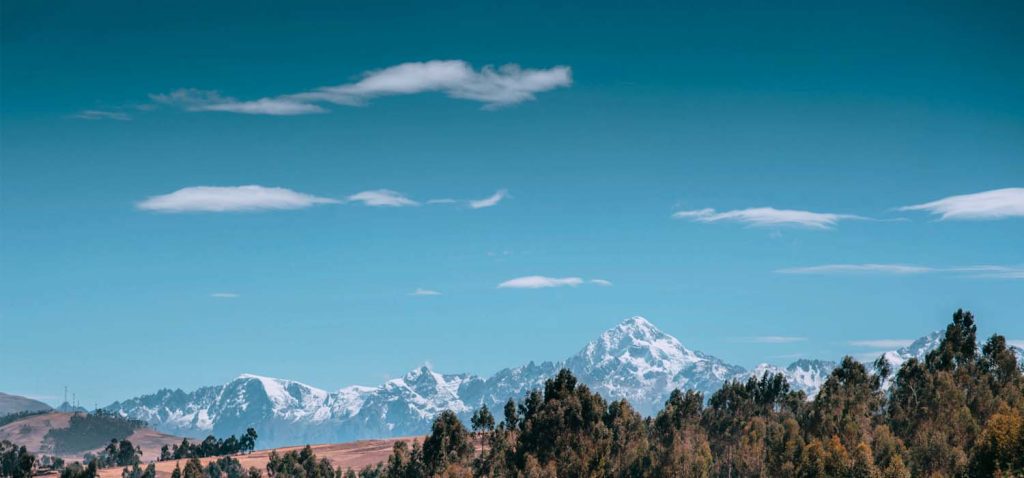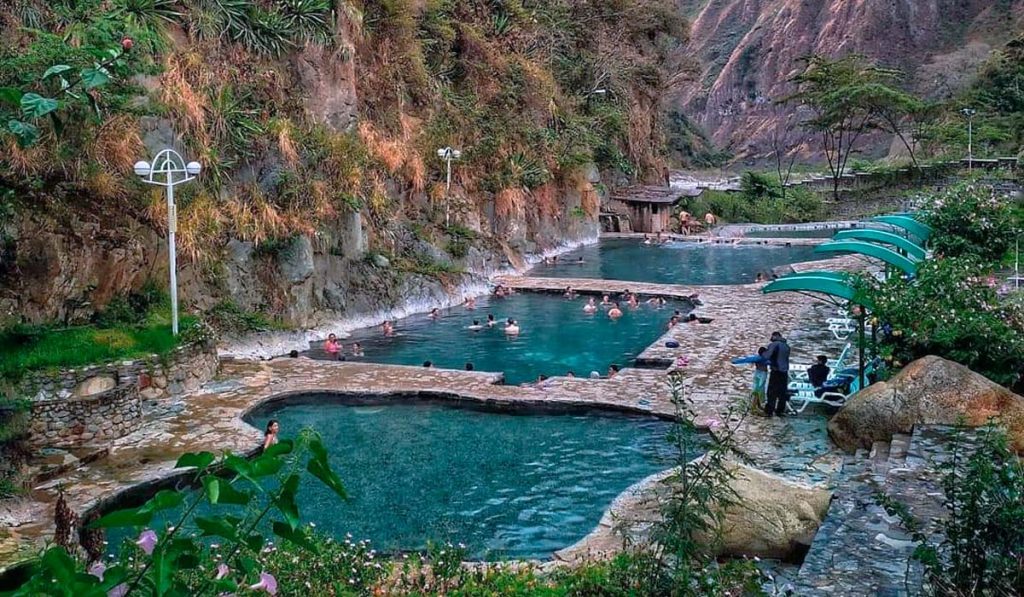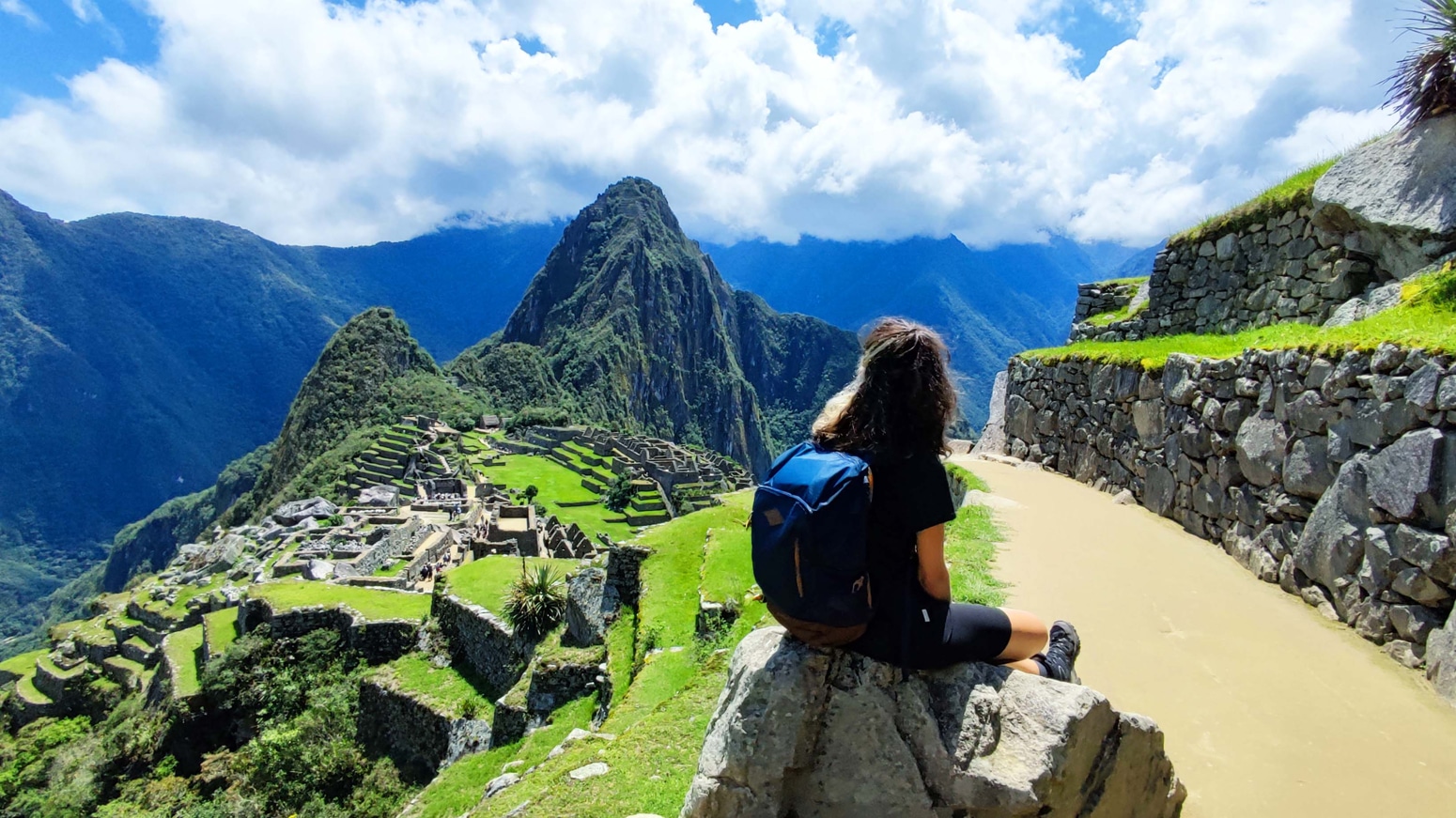Hello! Click on one of our members below to chat on Whatsapp
The Inca Jungle Trek to Machu Picchu is the perfect adventure trek for the thrill seekers among you. Start your adventure with downhill mountain biking, which leads to a lookout point with breath taking views of the Andean landscape. After, enjoy an exhilarating experience white water rafting down the Urubamba river. If that wasnt enough, zipline through the jungle for an extra dose of adrenalin. See the most stunning and unique flora, the subtropical climate allows the vegetation to flourish. You will also be privy to a diverse selection of bird life, monkeys and spiders.
The best part about this trek is that you get to hike a portion of the Inca trail before taking a bus to the ultimate highlight of Peru, the magnetic Machu Picchu.
We have the best detailed information on the Inca Jungle trail itinerary and its route map. I have also provided guidance on the best time for this trek, acclimatization and altitude sickness, the best tour operators, and recommended packing list.
Generally, the Inca Jungle trek is 4D/3N. Although it is possible to complete the trek on a 3D/2N itinerary on request if you are doing a private tour.
The total trekking distance on the Inca Jungle Trail is approximately 50 km / 31 miles. This distance ultimately depends on the tour company and routes you take. The walking is split over three days with Day 2 being the longest distance (10-22 km / 6.21-13.7 miles with around 6 hours of hiking.
Day one is mostly 3 hours of cycling for 65 km / 40 miles down Malaga pass. This is followed by two hours of whitewater river rafting down the Urubamba River. Its important to note that rafting is dependent on season and river condition, this activity will be skipped if the conditions are not suitable. Most river rafting tours are on fairly easy Grade II-III rapids, but some companies have the option for more challenging, Grade IV rapids.
The second day is almost 7 hours of hiking, passing many fruit plantations. Eat the fruits straight from the trees and enjoy a little bird watching along the way. At the end of this long but gradual hike you get to relax and soak your tired muscles at the hot springs of Cocalmayu.
Day 3 includes 3 hours of hiking through a portion of the Inca Trail. This is followed by another couple of hours of hiking on flat terrain along the train tracks to the small town of Aguas Calientes (Machu Picchu Pueblo).
The last day is exclusively reserved for Machu Picchu. It is also possible to add an extra hike up Huayna Picchu Mountain for panoramic views of the citadel and to visit a few secret temples located at the top.

Accommodation on the Inca jungle trek depends on the standard of tour you have booked. A budget tour will most likely include hostels. With Orange Nation, we choose only the best for our clients. You can enjoy a comfortable stay in a country lodge for the first 2 days and 3 star accommodation in Aguas Calientes. You can upgrade your hotel in Aguas Calientes to 4* or 5 *. However, accommodation on the trek is scarce, so unfortunately there are not many options to choose from.
The Inca Jungle trek is usually completed on a 4 Day / 3 Night itinerary. The itinerary set out below is the most common, with subtle variations from tour company to tour company.
(*Itinerary courtesy of SAM TRAVEL)

Our adventure starts at 6 am! The guide will pick you up at the Cusco hotel in our private van for the drive to Ollantaytambo where you have a short time for breakfast. Then we drive by uphill to reach Malaga pass, (4,350m/14,357ft), where we have a few minutes to prepare our biking equipment and ourselves before we start our 3-hour journey, cycling downhill towards Santa Maria (1,500m/4,950ft). Enjoy the different microclimates such as the highland, cloud forest, rainforest and the two stunning archaeological sites of Incatambo and Wamanmarca. In the afternoon, be able to raft in the Urubamba River for two hours, then back to our countryside lodge for tea, appetizers and dinner.
Today after an early breakfast, walk for seven hours through the rainforest, enjoying a myriad of fruit plantations such as avocados, maniocs, oranges, mangoes, cacao, coffee and coca shrubs. Arrive at Quellomayu for lunch. Then we walk up a moderate hill through a portion of the original Inca Trail towards the hot springs of Cocalmayu. Once we arrive, enjoy the medicinal hot springs and relaxing after our long walk. Afterwards we drive to Santa Teresa where we spend the night at our country lodge.

Today is the toughest and most beautiful day of our trek. After breakfast, drive for 30 minutes to Lucmabamba (2,000m/6,600ft), where we start walking up a moderate hill for 3 hours through portions of the original Inca Trail and the cloud forest towards the Puncuyoc Pass.
Then walk downhill for about 20 minutes to Llactapata 2,700m/8,907ft, an Inca site located straight in front of the Citadel of Machu Picchu! The panoramic views from here are breathtaking. You can see different angles of the Citadel of Machu Picchu, the mountains of Machu Picchu, Huayna Picchu and the Aobamba canyon where another section of the Inca Trail is visible. For the next couple of hours we walk downhill, arriving at the hydroelectric plant for lunch. Later, hike for couple of hours through the National Park of Machu Picchu to Aguas Calientes, or take the train, enjoying the amazing location of the Citadel of Machu Picchu!
At Aguas Calientes, after we check into our hotel, there will be time for sightseeing or shopping in this picturesque little town. We enjoy dinner together in a restaurant before we turn in for the night.
This is the day you’ve been waiting for! After an early breakfast at your hotel, take one of the first buses up to Machu Picchu, to witness the sunrise. It is a truly extraordinary site and not something you’ll want to miss! Your guide will give you a tour, which takes about two hours. See most of the important parts of Machu Picchu Citadel. Also learn about how Machu Picchu is divided into three sectors: agricultural, residential and religious.
When you have had your fill of the exceptional views of Machu Picchu, take the bus back down to Aguas Calientes for lunch (not included). Depending on your train departure time, you may also have time for some shopping, sightseeing or a visit to the museum or hot springs.
The Expedition train will take you back to Ollantaytambo at 2:55pm or 3:20pm, following the spectacular Urubamba River. Close to Aguas Calientes, the canyon is narrow and the river has many beautiful sections of whitewater. You can also see Wiñay Wayna from the train, if you look up high on the steep canyon wall! Back at Ollantaytambo, the driver will meet you at the exit from the train station to take you back to your hotel in Cusco in our private vehicle. You can expect to arrive at your hotel by 7:00pm.

The trek naturally appeals to the adventurous types who like thrilling adrenaline-filled experiences. Booking the Jungle Trail through a tour company allows you to do multiple activities in a few short days.
If you´re looking for treks that are exclusively hiking, then check out a few alternatives below.
Here are some alternatives:
There are two main seasons in the subtropical Peruvian Andes:
The Inca Jungle trek can be completed all year round. However, heavy rains during January and February often lead to landslides, which often affect the trail and road that connects Santa Maria with Santa Teresa. Because of this, the Inca Jungle trek is often closed between January and February.
The best time to do an Inca Jungle trek is either during the dry season or in the dry season shoulder months of March / April and October / November. The latter shoulder months are particularly good if you are keen to do some river rafting in Santa Maria.
The trail is busier during the dry season. That said, it never reaches the capacity of the Inca Trail, so you can still enjoy this amazing trek minus the usual crowds.
Temperatures are fairly consistent all year round, with warm days reaching temperatures of 20°C (68°F) and higher. The nights and early mornings are cold (with temperatures often decreasing to 0°C / 32°F and lower). In the dry season, temperatures sometimes drop below 0°C / 32°F too.
You will need to bring trekking clothing that you can layer up or down. Daily temperatures fluctuate and your body will heat up quickly when you’re active. See the packing list below for details on layering.
Finally, microclimates are the dominant weather force in the Andes. Make sure to bring some wet weather gear, like a basic poncho. It is possible to encounter rain at any time of the year.
The Inca Jungle trail is technically a high-altitude trek. In reality, the amount of time you spend at altitude is very short.
The highest altitude you will reach is Abra Malaga Pass at just over 4,300m / 14,108 ft. From this point, you will descend relatively quickly while cycling. You will end the day at a rather low altitude for the Andes, just under 1,200m / 3,937 ft.
For the rest of the tour, the trail undulates but never goes higher than 2,000m / 6,562 ft. Machu Picchu itself sits at 2,430m / 7,972 ft, which is still relatively low.
This means that altitude sickness on the Inca Jungle trail is rare. It’s nowhere near as prevalent as some of the other trails in this region where trekkers spend good portions of time hiking over 4,000m / 13,123 ft passes.
You are in fact at a greater risk of succumbing to altitude sickness symptoms before you start the trek. Most visitors to Machu Picchu fly into Cusco first, which is situated at a high altitude of over 3,400m / 11,155 ft.
Experiencing mild altitude sickness, like headaches or nausea, is common for visitors in Cusco. It is important that you spend a few days acclimatizing at this altitude before going any higher.
Another good option, if you have the time, is to immediately descend from Cusco into the Sacred Valley, which is a good 1,000m / 3,281 ft lower. You can rest here for a few days before returning to Cusco to join your Inca Jungle trek tour group.
Looking for a day tour? Here are my 5 favorite day tours around Cusco:
The packing list for an Inca Jungle trek is similar to most other multi-day treks. Tour operators generally provide all the adventure sports material, so there is no need to bring your own. Click the following link for a comprehensive list on what to pack.
Packing List.
The Inca Jungle Trek is a diverse adventure with many different activities – trekking, cycling, white-water rafting, and zip lining. The trek is definitely better suited for the young-at-heart adventure seeker.
The mountain bike ride is all downhill which means even less experienced cyclists can manage this trek. The total hiking distance for this trip is 49km / 30 miles over three days. A lot of this trek is over flat terrain with no high-altitude passes.
In conclusion, some fitness is helpful but there’s no need to overdo it in preparation.
Over the last few years, the number of trekking companies offering the Inca Jungle trek has increased significantly.
Some operators have great offers, use fantastic cycling equipment and provide a brilliant service overall. However, as the route is not regulated, there are a few sharks in the market to watch out for. These guys offer cheap tours that definitely cut corners (hopefully not ones on Abra Malaga Pass!).
Prices for the Inca Jungle trek range from US$250 per person with the cheapest operators to US$700 per person with the best operators. Overall, it’s a good idea to budget between $400-$600 for a typical Inca Jungle Trek tour.
Inca Jungle Treks usually include:
The following are usually excluded from your Inca Jungle Trek Price:
Please Note: The best trek operators will have much better equipment, service, accommodation, and guides. So, it’s a better idea to choose a reputable tour operator with good services and who compensates their support staff (office admin, guides, porters and chefs) well.
Insurance for your trek to Machu Picchu is a must since most operators will require you to carry sufficient travel insurance for your trek.
Make sure that the insurer you choose covers mountain biking and white-water rafting.